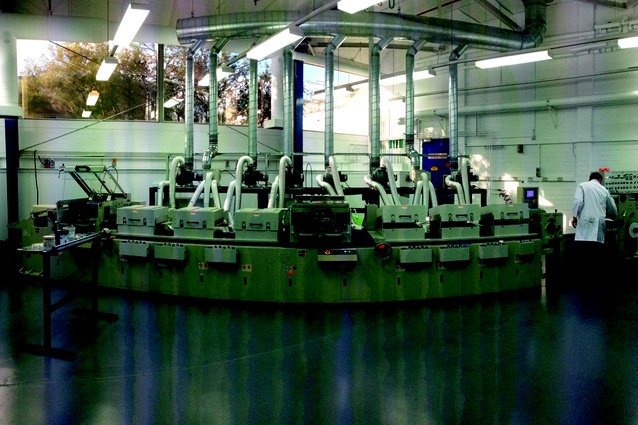Control P
Scientists have produced the largest flexible plastic solar cells in Australia – 10 times the size of what they were previously able to produce – thanks to a new solar cell printer that has been installed at one of CSIRO’s Melbourne facilities. The printer has allowed researchers from the Victorian Organic Solar Cell Consortium (VICOSC) to print organic photovoltaic cells the size of an A3 sheet of paper.
According to CSIRO materials scientist Dr Scott Watkins, printing cells on such a large scale opens up a huge range of possibilities for pilot applications. “There are so many things we can do with cells this size,” he said. “We can set them into advertising signage, powering lights and other interactive elements. We can even embed them into laptop cases to provide backup power for the machine inside.”
VICOSC project coordinator and University of Melbourne researcher Dr David Jones said one of the great advantages of the group’s approach was that they were using existing printing techniques, making it a very accessible technology. “We’re using the same techniques that you would use if you were screen printing an image on to a T-Shirt,” he said.
Using semiconducting inks, the researchers print the cells straight onto paper-thin flexible plastic or steel. With the ability to print at speeds of up to ten metres per minute, one cell can be produced every two seconds.
As the researchers continue to scale up their equipment, the possibilities will become even greater. “Eventually we see these being laminated to windows that line skyscrapers,” Dr Jones said. “By printing directly to materials like steel, we’ll also be able to embed cells onto roofing materials.”
The organic photovoltaic cells produce 10 to 50 watts of power per square metre.










